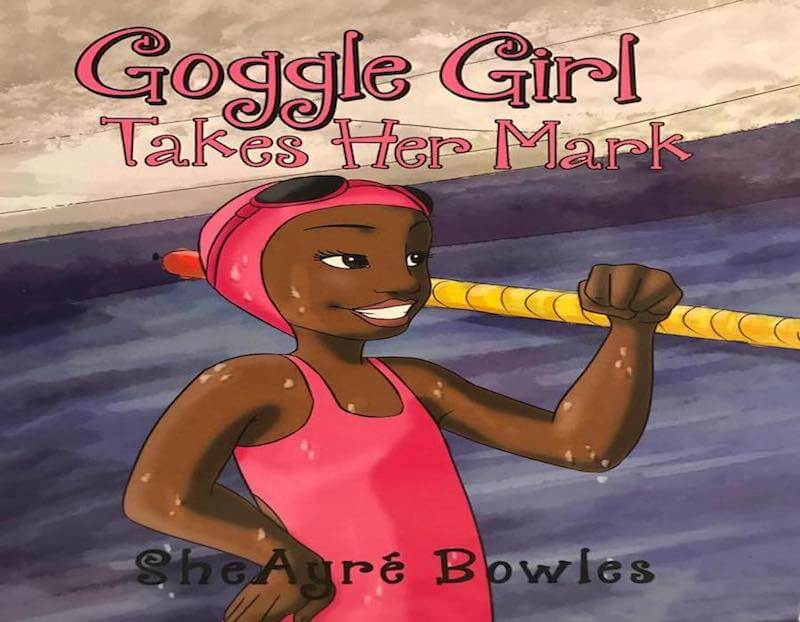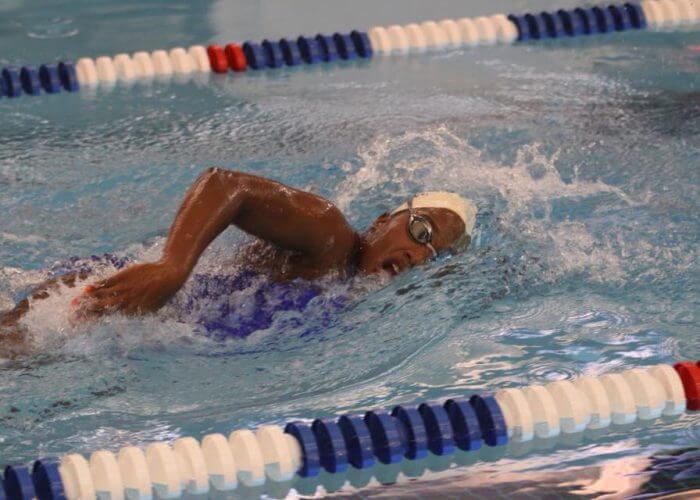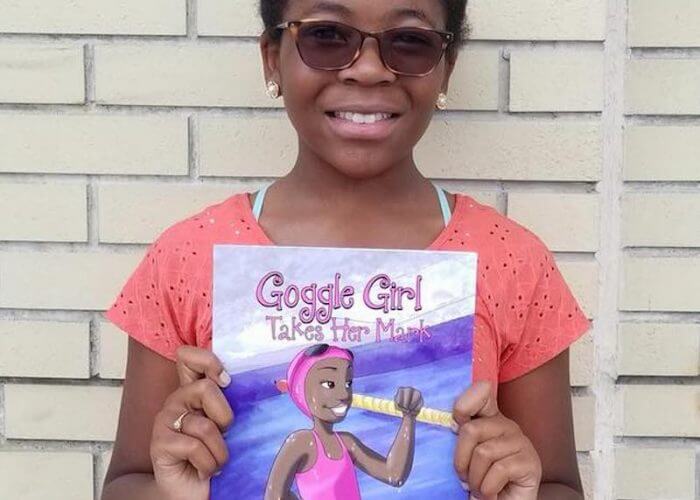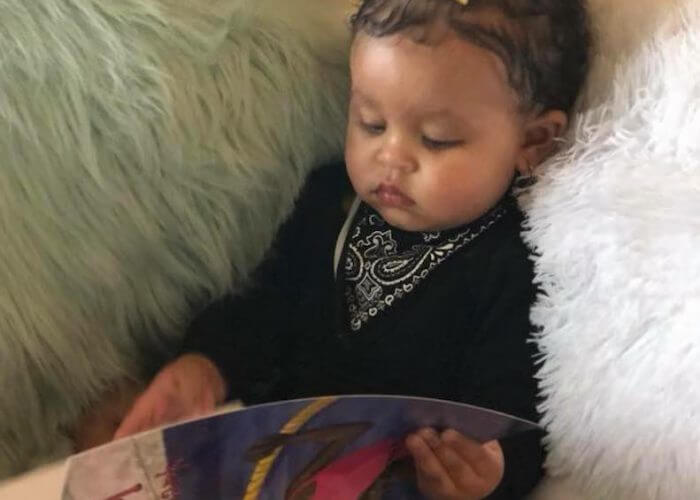Q&A With SheAyre Bowles, Author of “Goggle Girl Takes Her Mark”

By Eamonn Keenan, Swimming World College Intern.
Everyone is watching you. You need to make a decision – one that might tear you apart. Should you do what you’re told or what you know deep down is the right choice? You indecisively walk up behind the blocks. Once you finally put on your goggles, you feel invincible. Now you know that you truly can do it.
You follow your heart, and it pays off.
This is the plot of SheAyre Bowles’ new children’s book, Goggle Girl Takes Her Mark. It’s the true story of a young swimmer who is faced with a difficult decision at the state meet. Should she do as her coach says and false start the 100 fly in order to save energy for her best race, the 50 free; or should she get tough and give it everything for both races after just swimming the 100 free?
Bowles, originally from Anchorage, Alaska, has been swimming all her life and is currently heading into her senior year as team captain of the Chowan University women’s swim team. Inspired by her own experiences growing up as a minority in the sport, Bowles sits down with Swimming World to discuss the story behind the book.
Swimming World: How’d you get into swimming?
Bowles: When I was in a baby, I couldn’t walk. Instead, my mom would often take me into the water, and I just loved it. Growing up, I tried other sports alongside swimming, but none of them compared. I loved to race, I loved the feeling of the water, and I loved that it was something different.
My family is a pretty big basketball family. My brother played for University of Kentucky, my dad played both basketball and football in college and my mom went DI in basketball. But I became the swimmer – I fell in love with it, and I just couldn’t stop.

Photo Courtesy: SheAyre Bowles
SW: When did you get into writing, and what drew you to writing a children’s book?
Bowles: I always loved writing; it was one of my strong suits growing up. When I was in middle school drama class, one of our assignments was to write a script for a play. I wrote a 50-page script by hand – it was like a script for a thriller-drama movie – and I won best script in the class. Ever since, I realized that writing was something that I really wanted to do.
I had always really wanted to write a children’s book. I always wanted to create something that would allow me to pursue my passion of teaching and writing, so I decided to write Goggle Girl.
SW: What inspired you to write about competitive swimming?
Bowles: The reason why I decided to write about this personal experience of mine – this is actually a true story – is because you don’t see a lot of books about swimming, and you don’t see a lot of books about African American swimmers. Growing up, I was often the only black swimmer. I wanted to write a story that would be more accessible not just for African Americans but for all other minority races – to portray something different. I want everybody to be able to say, “Hey, if you can do it, then I can do it too!” regardless of race.
Whereas I think swimming was a great way to get at this message, it’s not just about swimming. I think swimming helps reinforce this message, because it’s also something different in and of itself. I wanted Goggle Girl herself to be different, because everyone can relate to being different on some level.

Photo Courtesy: SheAyre Bowles
SW: How did you work to make the subject matter of the story more accessible to non-swimmers?
Bowles: I wanted the story to be accessible to non-swimmers in the message, and I wanted the message to be clear and strong. Everyone can relate to making a decision between doing what they should or what they are told to do and what they want or think is right. I want people to be able to access the message that Goggle Girl followed her heart, and it worked out for her.
I wanted to write it for kids, because I think that it’s important for kids to be able to be true to themselves: To be comfortable with themselves and passionate about their goals and dreams. For them to know that would be so beneficial for them when they get older, because then they can really follow their own path and be creative.
SW: What is the significance of having the protagonist of a children’s book be someone who is infrequently represented, like Goggle Girl?
Bowles: It’s important to have it in a children’s book because if it was in an adult book, adults would read it; but if it’s in a children’s book, the whole family reads it. Yes, it’s for children, but it also has a message for adults and teenagers as well.
To have a minority swimmer is something different and eye-catching; you’ve never seen it before and it’s never talked about. I want to spark up that conversation, because the reality is that it’s never talked about and never seen. For example, when you look at the Olympic swimmers, there aren’t many minorities represented. I want to change up what’s expected.
I think it’s incredibly powerful for other young minorities to see Goggle Girl as the main character of the story. I want to give them encouragement and a voice. Even though it’s not going to be easy, I want to let them know that they can do it. I want them to know that they’re not alone, because there are inevitably going to be times in which they feel that way.

Photo Courtesy: SheAyre Bowles
SW: What effect did Goggle Girl’s race have on her character, and how did your personal experience of growing up as an African-American swimmer affect the construction of the story?
Bowles: I’ve dealt with racism and feeling different all throughout my life. I wanted to show that even though Goggle Girl is different from everyone else in the story – like I was pretty much the only non-white swimmer on my team – we’re all swimmers and we all race the same. No matter what your race or ethnicity, when you’re in the water, it’s racing time.
SW: Why did you choose the name Goggle Girl? How does it complement her identity?
Bowles: The reason why I named her Goggle Girl was because when she puts on her goggles, she can’t see color. Every time I walk up to the blocks before my races I have my goggles on; they’re pretty much always on. My teammates always tease me by asking, “Why do you have your goggles on so soon?” It’s because that’s the way I get in the zone. When my goggles are on, nothing else matters. I’m fearless with my goggles.
I wanted Goggle Girl to be fearless in that same way. While she’s dealing with the conflict of whether she would rather be known as the tough racer or the winner, the way in which she identifies herself makes it harder to make a decision. False starting is really embarrassing; even more so when you’re the only black swimmer at the meet. Goggle Girl had to be fearless. She’s a racer, and even though she was tired, she pushed through, and it all paid off. I want to show other people that they can do the same.
You can learn more about Goggle Girl Takes Her Mark and the author by visiting the Facebook page. The book is available to purchase online from Amazon and Barnes & Noble.
All commentaries are the opinion of the author and do not necessarily reflect the views of Swimming World Magazine nor its staff.



